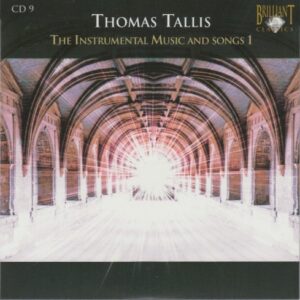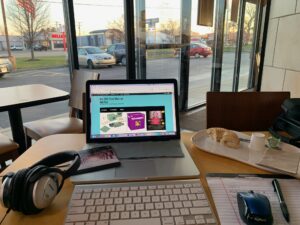 Today’s selection from the Brilliant Classics box set of music by Thomas Tallis is mostly instrumental. The CD is called, appropriately, “The Instrumental Music and Songs I.”
Today’s selection from the Brilliant Classics box set of music by Thomas Tallis is mostly instrumental. The CD is called, appropriately, “The Instrumental Music and Songs I.”
I think this CD may be of great interest to me since what often makes Tallis so aurally tiring is the sameness of sounds from the choir. Like, I’m hearing the same song for 70 minutes.
Or, like binging a favorite TV series on DVD or Blu-ray (and, before anyone squawks about me being old school and not streaming, all I can say is streaming is for chuckle heads who don’t know any better). It doesn’t matter if what I’m binging is Seinfeld, The X-Files, Frasier, Blue Bloods, Castle, or Downton Abbey. After awhile, I start to identify too much with the episodes and I get irritated by the characters or what happens to them. In short, the episodes – even though many are beloved favorites – become too much. I need a break from them.
 That’s how I felt about Bach’s harpsichord music (fingernails on a chalkboard!) and about Tallis’ vocal music. Too much!
That’s how I felt about Bach’s harpsichord music (fingernails on a chalkboard!) and about Tallis’ vocal music. Too much!
Granted, instrumental music can also be repetitive. Hindu chant music, for example. If you enjoy drones, it’s groovy.
But if you’d like an occasional screaming guitar solo to shake you and wake you, you’re in for a rude awakening.
This Tallis music, however, is quite varied. As I type these words, for example, I’m listening to Track 6 (“Felix Namque 2”) and what I believe is a lute play what we’d today call “Classical” guitar music (a la Segovia). It’s a welcome respite from vocals and harpsichords, and a very nice piece of music.
But so was Track 5 (“Fantasia”), which was – unless I’m mistaken – expanded into a lush orchestral piece by Ralph Vaughn Williams, which you can see/hear on YouTube:
I prefer the Williams piece, especially in that setting where, in 1910, Williams first performed the piece he wrote.
Just the Facts
CD 9 of this 10-CD box set consists of 23 tracks that clock in at 75:15.
It was recorded on three different dates, in three different locations.
Tracks 1-6 & 19-23 were recorded on May 13-15, 2004, at St. Andrew’s Church, Toddington.
Tracks 7 & 1-5 were recorded on August 2, 2004, at Fenton House, Hamptstead.
Tracks 16-18 were recorded on May 23-24, 1999, at The Chapel of Knole House.
This CD is marked DDD, which means it is an all-digital recording. (Digitally recorded, Digitally mixed, and Digitally mastered.) Purists, those folks who think vinyl sounds better than CDs (they’re wrong) would probably look askance at this recording. But, to my ears, this is the best way to record music to precisely capture every note. But what do I know?
The musicians (and countertenor) on today’s CD are:
Charivari Agréable (which is a band, not a person)
Lynda Sayce (“One of Britain’s leading lutenists with over 100 recordings to her name,” from her web site) – Lute
Laurence Cummings (“…a British harpsichordist, organist, and conductor. He is currently music director of the Academy of Ancient Music,” from -his entry on Wikipedia) – Harpsichord and Virginals (which is a member – perhaps the oldest member – of the harpsichord family, according to this entry on Britannica.)
Andrew Benson-Wilson – Organ
Stephen Taylor – Counter Tenor
Just the Feelings
Recording quality: 5
Overall musicianship/vocals: 5
CD liner notes: 3
How does this make me feel: 5
This was a very enjoyable CD. I learned a great deal about the musicians, the instruments, and the places where this music was recorded.
I’m still not a fan of harpsichord music. To my ears, it’s perfect for setting the stage in a 1950s or 1960s TV series. Like, the episode “The Squire of Gothos” from Season 1, Episode 17 of Star Trek: The Original Series. In that episode, the crew of the Enterprise meet a puckish character named Trelane, who plays the harpsichord to help set the tone for who he is and how far removed rom the current star date he thinks human beings are:
Or, in this episode of The Andy Griffith Show in which an old lady sells Barney her car:
Any more than that, harpsichord as accent music, and I want to poke out my ears with a pencil.
I don’t know why.
But this CD by Tallis, even though it features harpsichord on a few tracks, is varied enough to make listening enjoyable – and possible.
Highly recommended!
